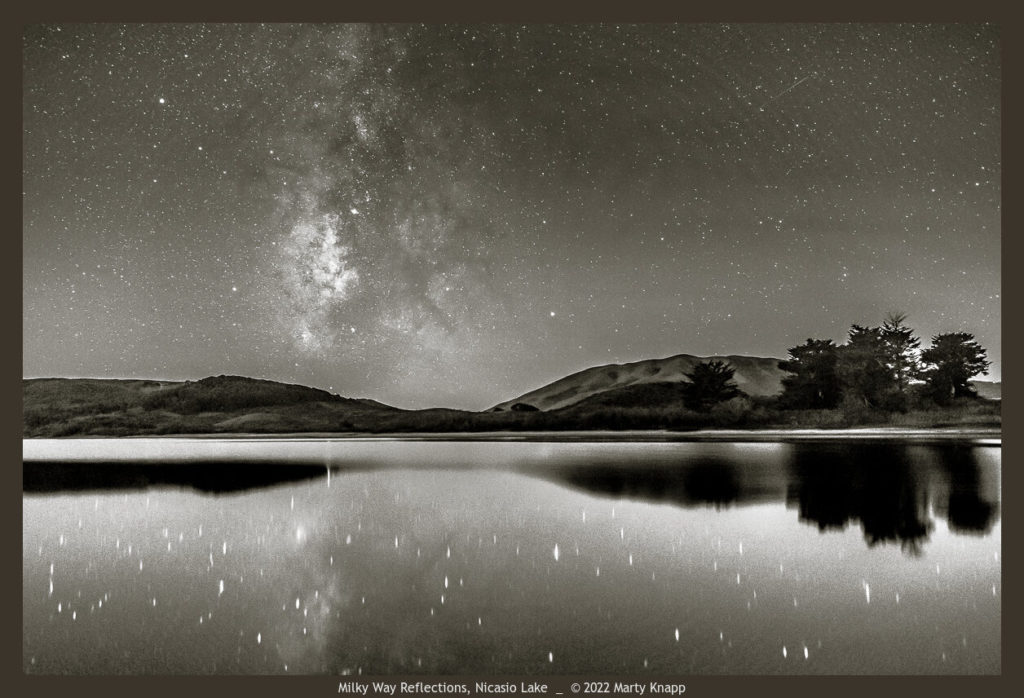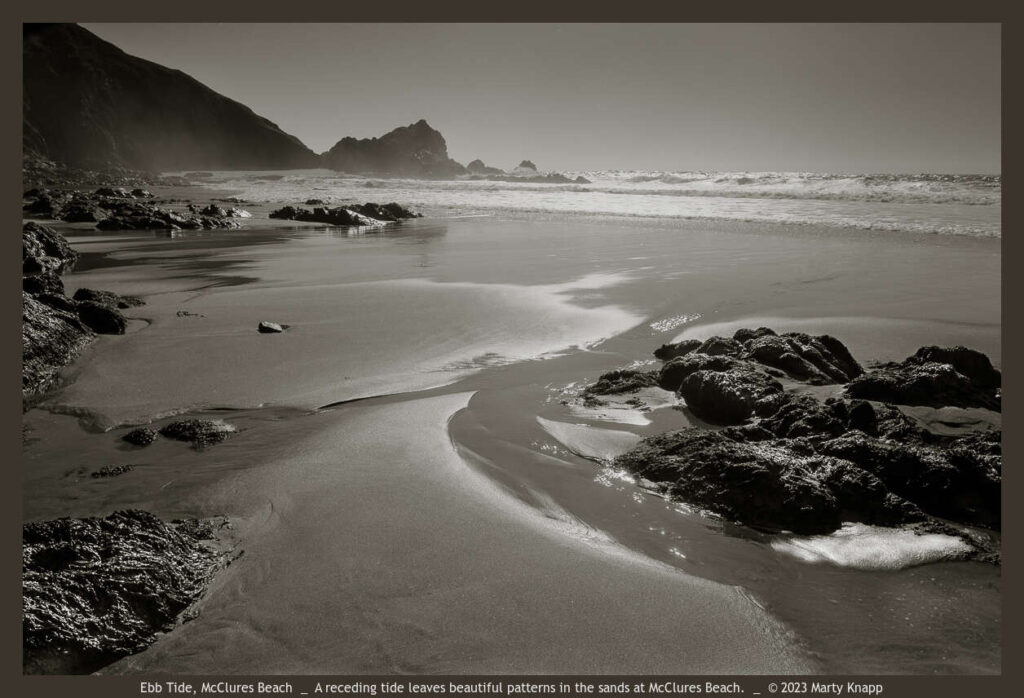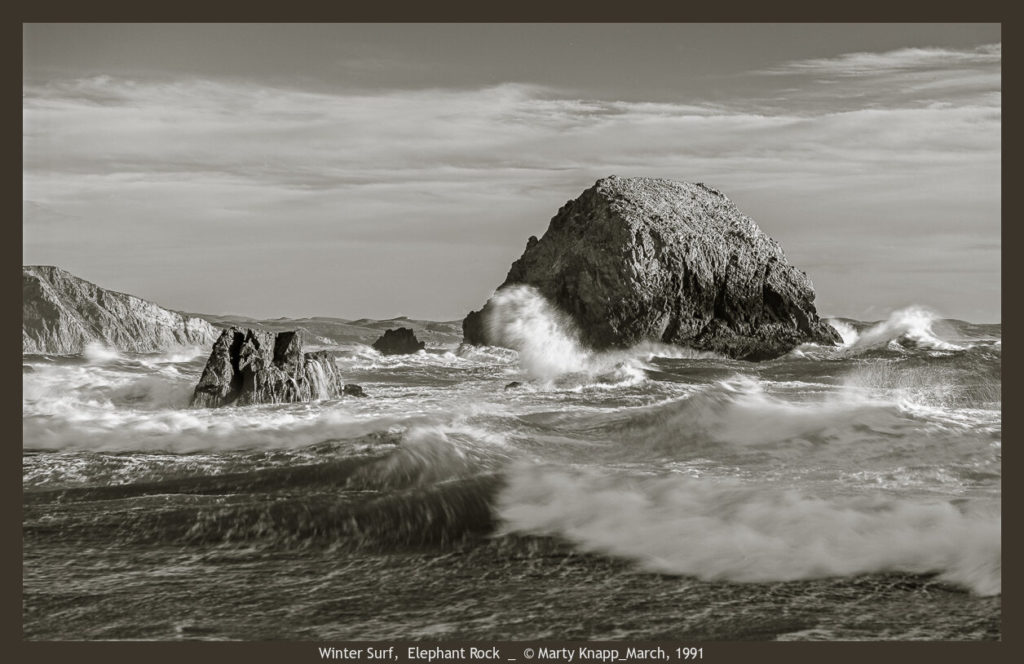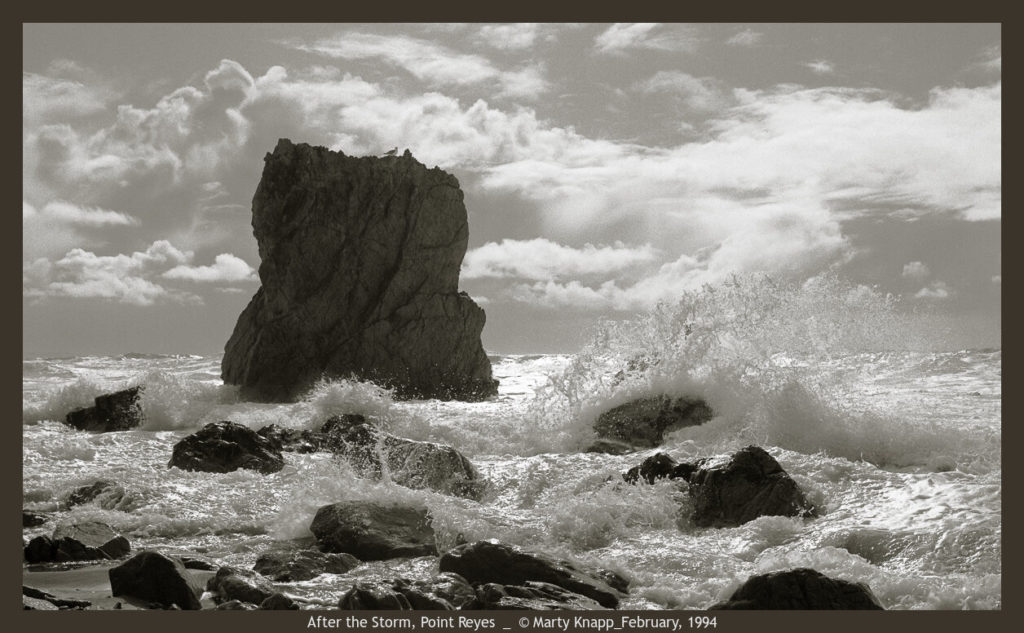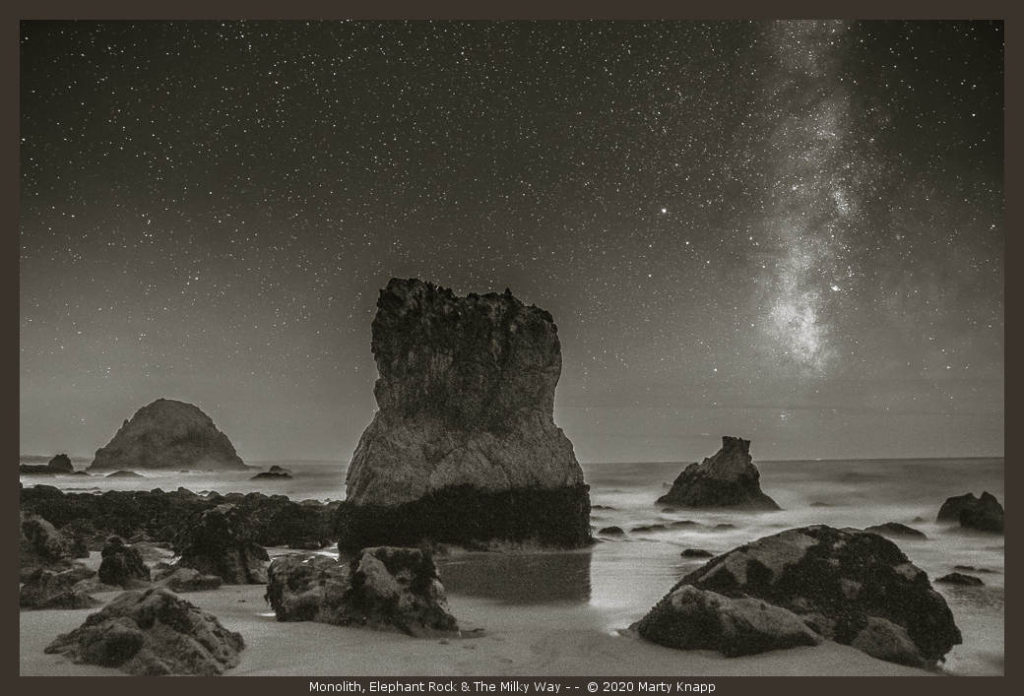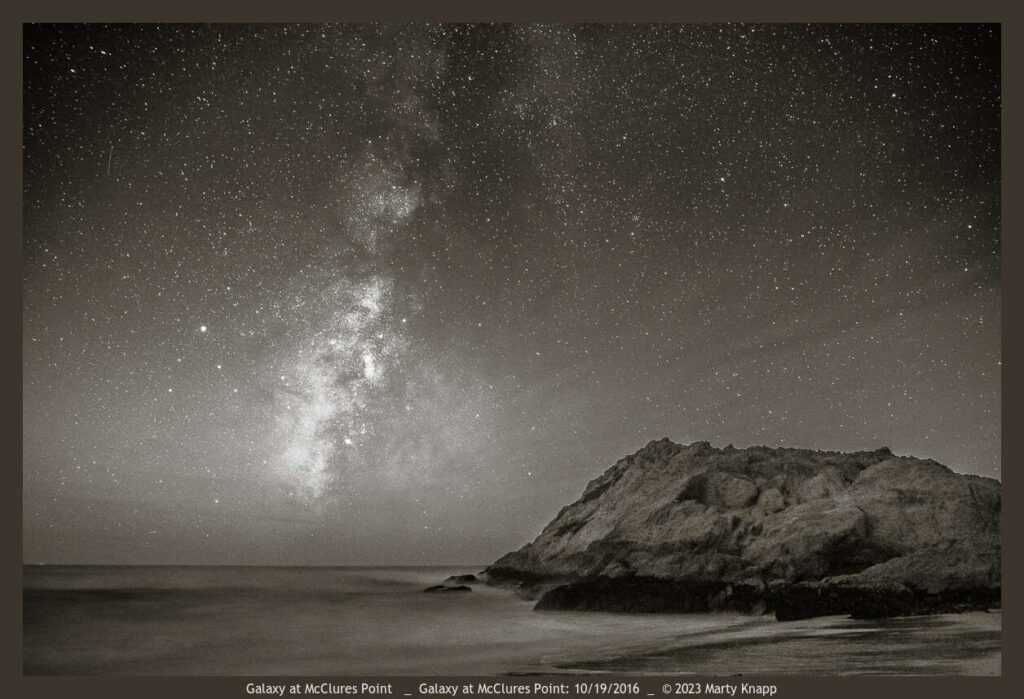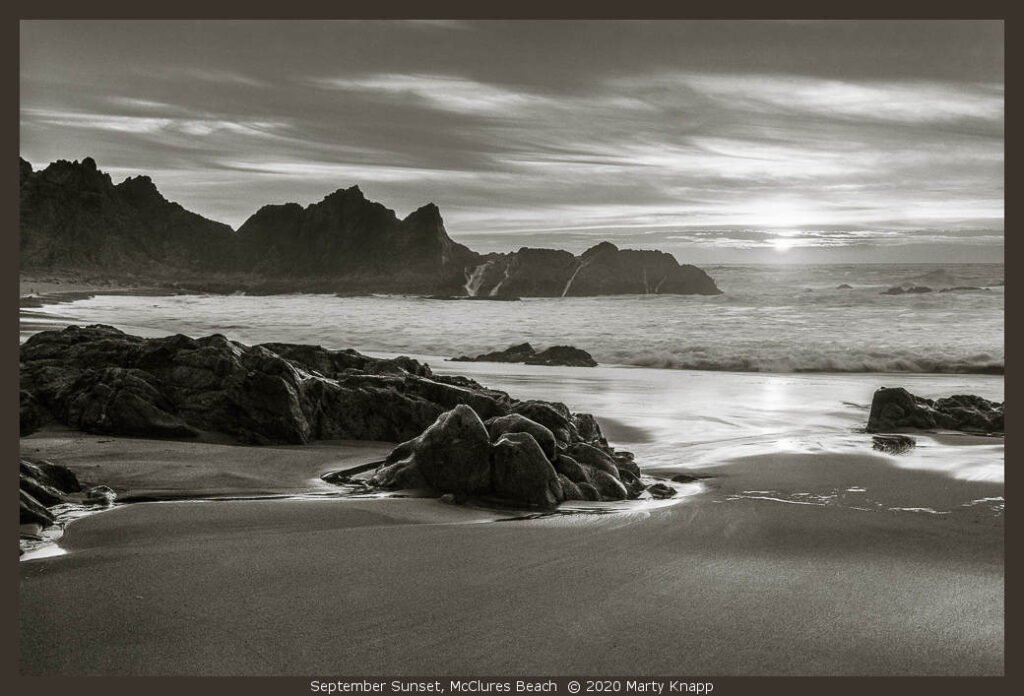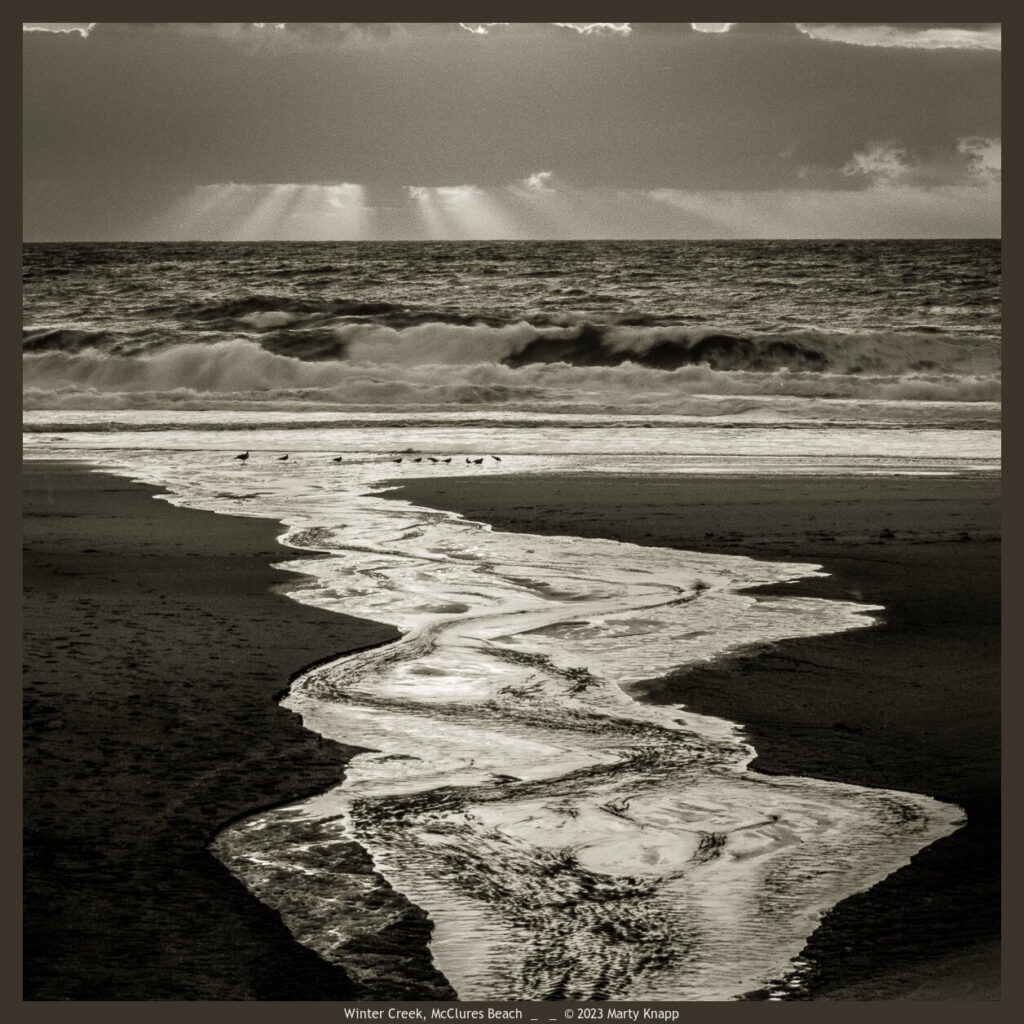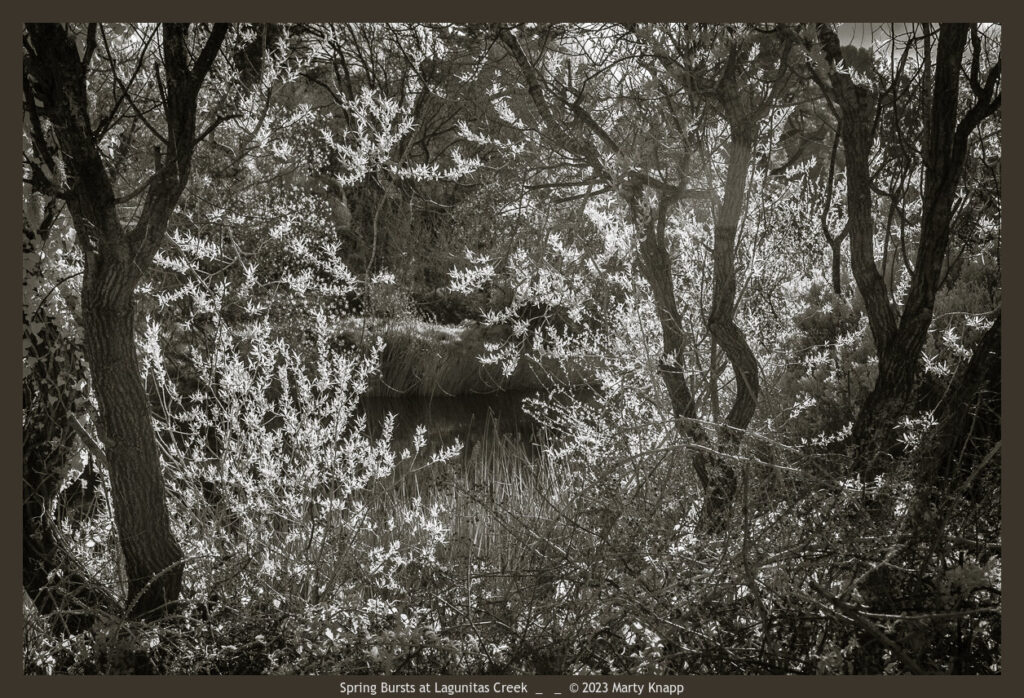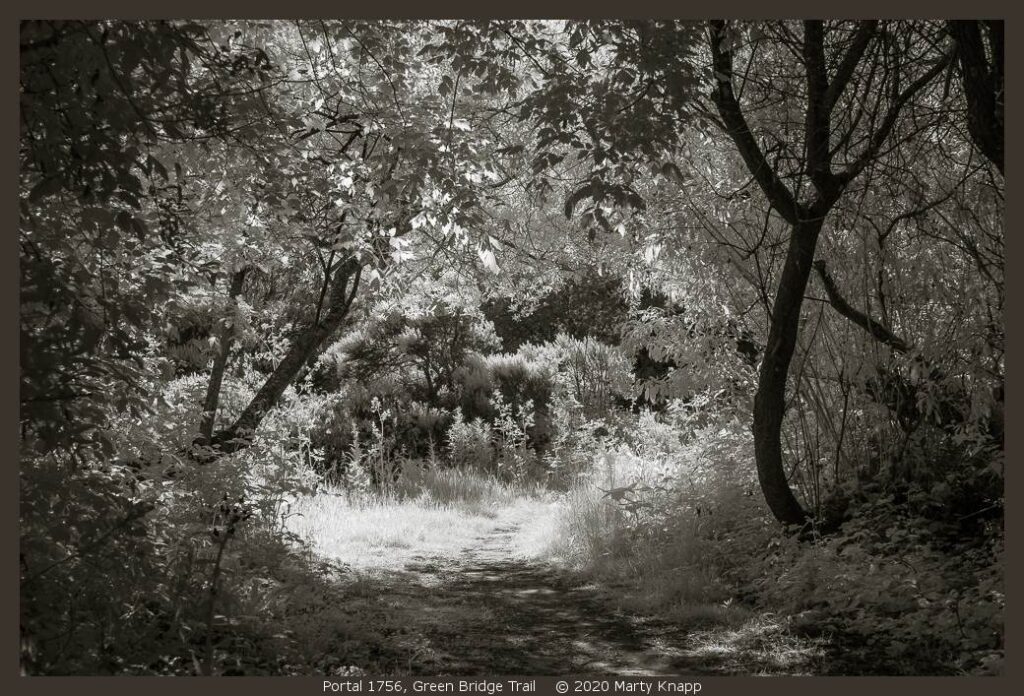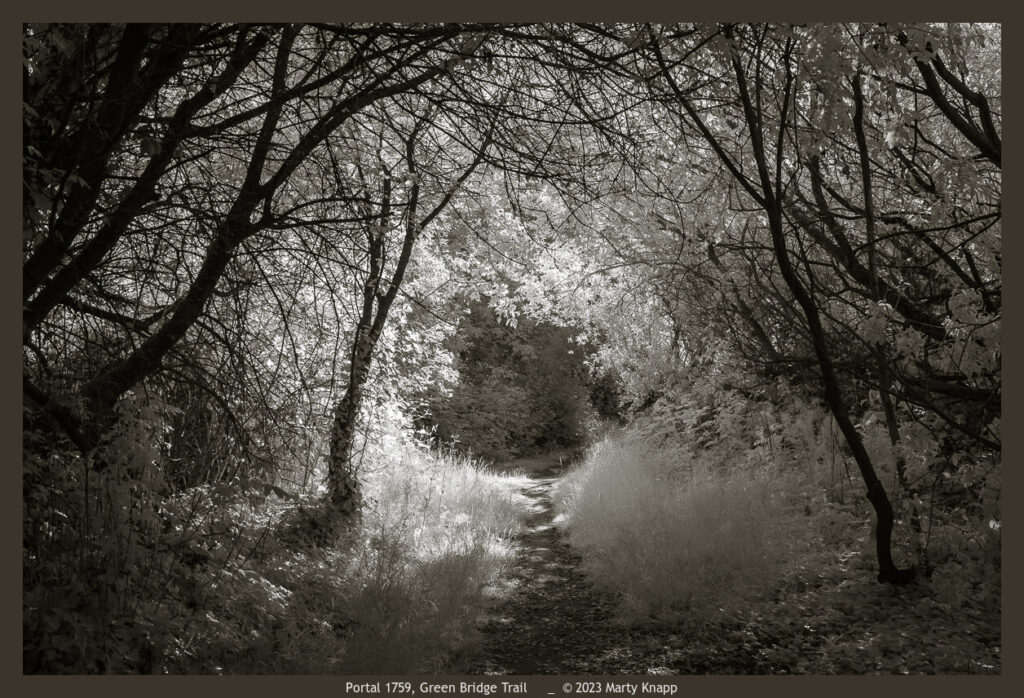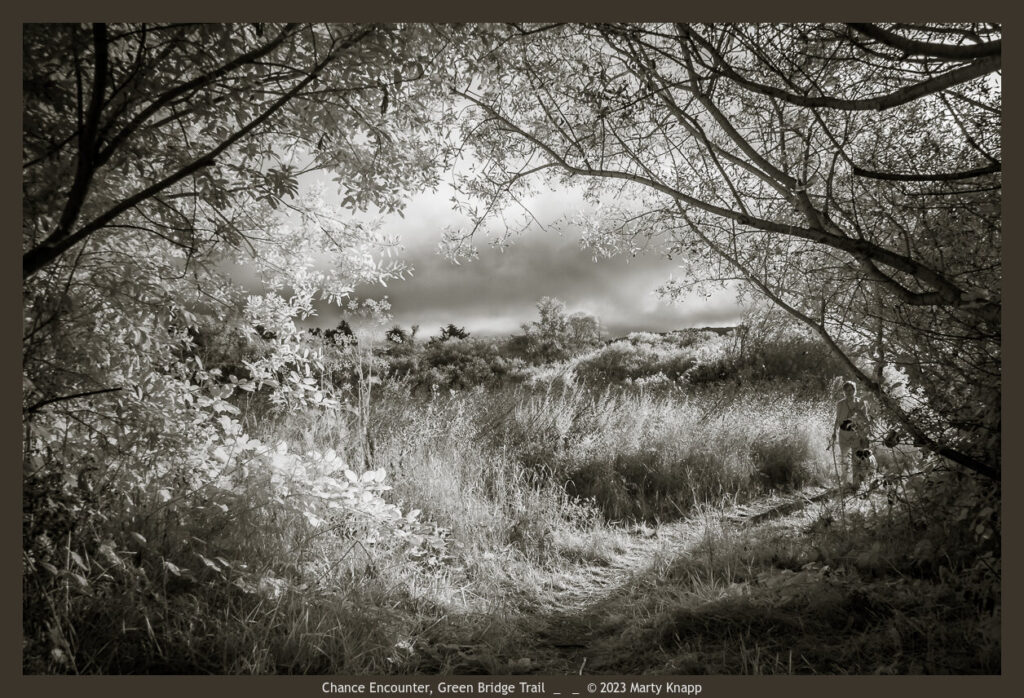This is the story of photographing the stars reflecting on the waters of Lake Nicasio.
Having seen a few magical photographs of the Milky Way reflecting on waters, I dreamt of making one of my own on the still waters at Lake Nicasio. Three essential conditions would be required: a moonless night, great atmospheric clarity, and most importantly, no wind–not even the slightest breeze. This was not to be an easy find, but finally, on the evening of October 20, 2016, the stars did align for me.
So it was, on this very still, clear and moonless night, I drove out to Nicasio to see if I could make my dream come true. I was kinda nervous as I parked the car in a pull-out across from the lake. I was aware that visits to the lake’s shore at night were forbidden by ordinance. I had heard of a recent misadventure that happened to some friends who were photographing the rising moon at the lake. They were brusquely shooed away from their peaceful efforts by an armed fish and game warden. Fortunately, no fines were levied. So, I was wary as I looked both ways before crossing the road. I stealthily crouched down and slipped between the bushes to get to the water’s edge. I knew I was breaking the ordinance, but since I would cause no harm with my peaceful pursuit I felt justified. I kept low and walked the perimeter until I found just the right place.
The water on the lake mirrored the stars. Not a breath of wind, and the sky above and to the horizon were clear as a bell. For a moment, I paused to take it all in. I felt the power of the scene. What immense, unfathomable beauty I witnessed! Then, I set up my tripod for the 15-second exposures needed to record the stars, Milky Way, and their reflections.
Each time I made an exposure, I cupped my hands to block the light emanating from the back of the camera. On this dark, moonless night my screen would look like a beacon and betray my presence there. After about a dozen exposures, I packed my camera away and began the short trek back to roadside. All had gone well, without incident. As I walked back toward the car I felt confident that I had gotten the photograph that I had dreamed of.
Milky Way Reflections at Lake Nicasio also appears in my book, Sky Walks.
Visit my website to order either prints or the book.
